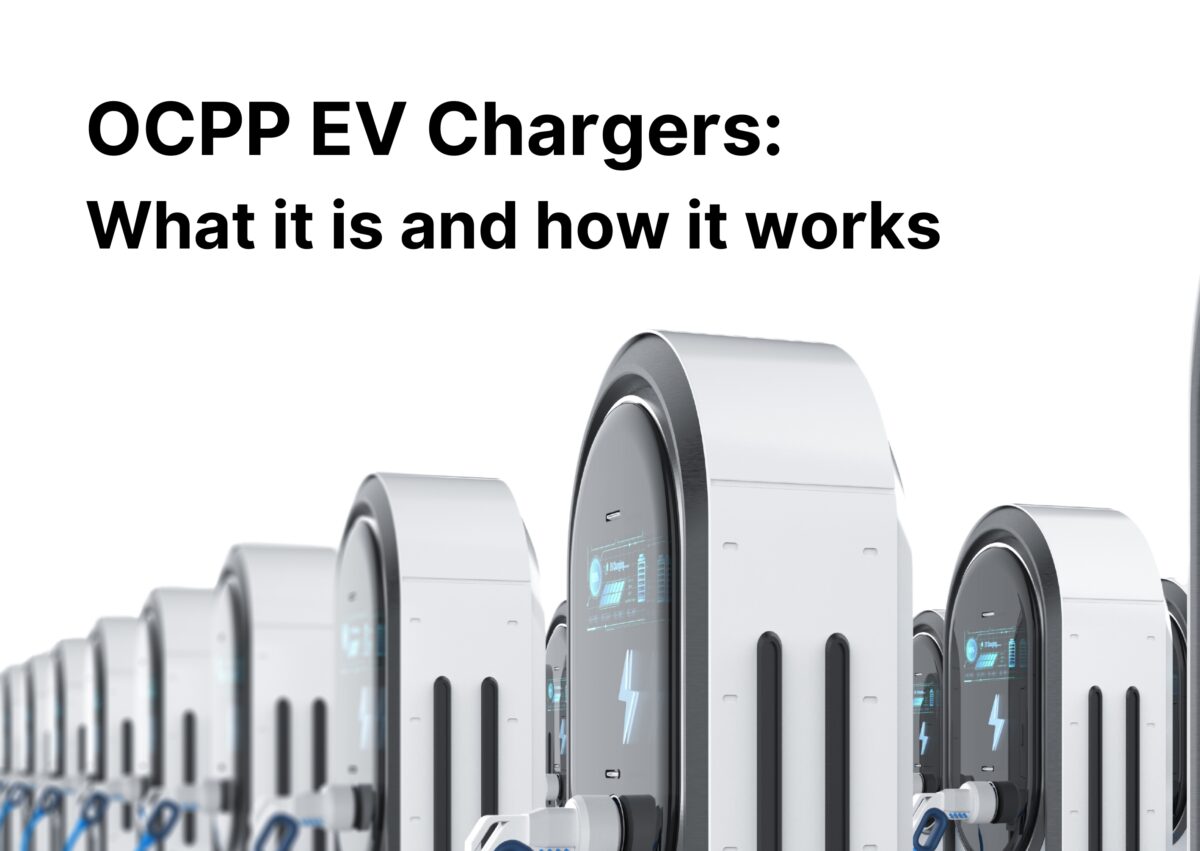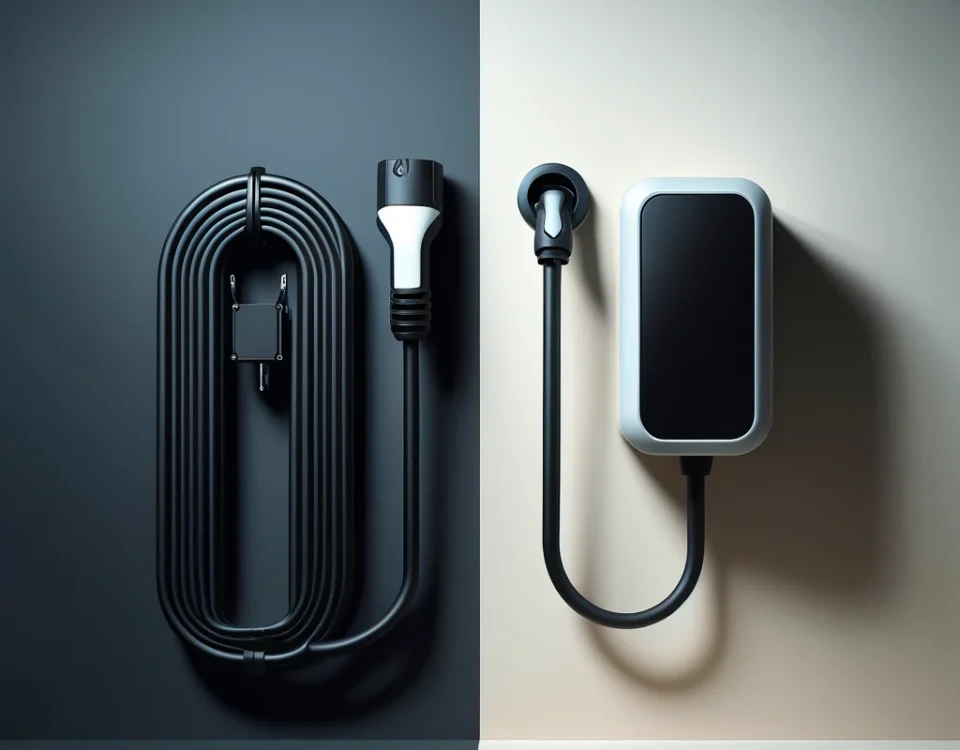
Imagine plugging your electric vehicle (EV) into a charger and it just… works. No fuss about compatibility, no scratching your head over different standards. This seamless experience isn’t just wishful thinking—it’s becoming a reality thanks to the Open Charge Point Protocol (OCPP). As the adoption of electric vehicles accelerates across the globe, the need for a unified, flexible charging infrastructure has never been more critical. Enter OCPP, the unsung hero of the EV charging world. In this article, we’ll dive into what OCPP EV Chargers are, how they work, and why they might just be the key to an electrified future. Buckle up and get ready for an electrifying journey through the world of OCPP!
Table of Contents
Understanding OCPP EV Chargers
What Are OCPP EV Chargers?
OCPP stands for Open Charge Point Protocol, a global standard for EV charging station communication. It’s like the Esperanto of EV charging—a common language that allows charging stations and central management systems to talk to each other, regardless of their make or model. This means that an EV charger equipped with OCPP can operate on any network that supports the protocol, making EV charging as simple as filling up a traditional car with fuel.
Significance in the EV Charging Ecosystem
The beauty of OCPP EV Chargers lies in their ability to promote interoperability. In the early days of EV charging, operators and manufacturers often locked themselves into proprietary systems. This was akin to owning a phone that could only call others from the same manufacturer. Not ideal, right? OCPP changes the game by ensuring that chargers and management systems can communicate across different brands and networks, paving the way for a more accessible, user-friendly EV charging infrastructure.
The History and Evolution of OCPP
From Humble Beginnings
The story of OCPP begins in the Netherlands, a country known for its picturesque canals, windmills, and now, its role in the EV revolution. Initiated in 2009 by a group of EV enthusiasts and industry professionals, OCPP was born out of necessity. The early adopters of EV technology recognized the need for a standardized protocol to ensure the future scalability and accessibility of EV charging infrastructure.
Milestones and European Influence
As OCPP evolved, it went through several versions, each improving on the last. From OCPP 1.2 to the latest, OCPP 2.0.1, the protocol has become more sophisticated, offering features like smart charging, enhanced security, and better data insights. Europe played a pivotal role in its development, with the Open Charge Alliance (OCA)—a collective of public and private sector stakeholders—steering the ship. The European Union’s push for greener transport solutions provided the perfect backdrop for OCPP’s growth, making it a cornerstone of the continent’s move towards sustainable mobility.
The Open Charge Alliance
The Open Charge Alliance deserves a special mention. This international consortium of public and private sector entities has been instrumental in the development, promotion, and adoption of the OCPP standard. Through their efforts, OCPP has become a beacon of innovation and collaboration in the EV industry, setting the stage for a future where electric mobility is accessible to all.
How OCPP EV Chargers Work
The Magic Behind the Scenes
At its core, the OCPP EV Charger functions through a sophisticated dance of digital communication. Imagine your EV charger as a smartphone and the central management system as the cloud. Just as your phone uses apps to communicate with the cloud, the charger uses OCPP to ‘talk’ to the management system. This conversation enables the charger to not only initiate and stop charging sessions based on commands but also send real-time data about the charging process, report any issues, and receive software updates.
A Closer Look at Communication Flow
Here’s a simplified breakdown of how it works:
- Identification: When an EV plugs into an OCPP EV Charger, the charger identifies the vehicle and communicates with a central system to verify access.
- Charging Session Management: The charger initiates the session once access is granted, continuously communicating data like charging speed, energy consumption, and session duration.
- Remote Operations: Operators can remotely start or stop charging sessions, schedule charging times to leverage lower electricity rates, or manage load during peak hours.
- Maintenance and Updates: The system can remotely diagnose issues or dispatch updates to improve the charger’s functionality, all through the magic of OCPP.
Think of OCPP as the conductor of an orchestra, where each musician (charger) plays in harmony, guided by the conductor’s baton (central management system). This harmony ensures a smooth performance (charging experience) for the audience (EV owners).
The Benefits of OCPP for EV Owners and Operators
Empowering EV Owners
For EV owners, the benefits of OCPP EV Chargers are clear. The standard’s emphasis on interoperability means more charging options and fewer worries about finding a compatible station. It’s like having a universal remote for EV charging—wherever you are, you can be confident your ‘remote’ will work with the ‘TV’ (charger).
A Boon for Operators
Operators, on the other hand, enjoy a host of advantages:
- Flexibility: With OCPP, operators aren’t tied to a single network provider. They can switch services without swapping out hardware, much like changing mobile phone carriers without needing a new phone.
- Efficiency: Centralized management of charging stations means operators can optimize usage, perform remote maintenance, and reduce operational costs.
- Customer Satisfaction: The ability to offer reliable, user-friendly charging experiences enhances customer loyalty and attracts more EV drivers to their EV Charging Platform.
Leveraging Data for Better Service
OCPP’s real-time data transmission enables operators to analyze usage patterns, predict demand, and plan for expansion. This data-driven approach ensures that the charging infrastructure grows in tandem with the increasing number of EVs on the road, preventing bottlenecks and ensuring a smoother transition to electric mobility.
OCPP in Action: Real-world Applications
Europe’s Charging Network Comes Alive
Across Europe, from bustling city centers to serene countryside locales, OCPP EV Chargers are powering the transition to electric mobility. Governments and private companies alike have embraced OCPP, rolling out networks of interoperable chargers that serve an ever-growing fleet of electric vehicles. In cities like Amsterdam, Paris, and Berlin, these chargers not only support local commuting but also bolster tourism by providing visitors with easy access to charging.
Case Studies: Success Stories Across the Continent
- Amsterdam’s Smart Charging Grid: The city’s commitment to becoming emission-free by 2030 has led to the installation of thousands of OCPP-compliant chargers, managed via a smart grid that optimizes charging speeds and times to balance grid demand and renewable energy availability.
- Cross-Border Charging Networks: Initiatives like the Central European Green Corridors project have established extensive networks of OCPP chargers, enabling EV drivers to travel across borders with ease, from Austria to Slovakia, without worrying about charger compatibility.
Municipalities Leading by Example
Many European municipalities are integrating OCPP EV Chargers into their fleets, demonstrating a commitment to sustainability and encouraging citizens to make the switch to electric. These public efforts are complemented by private enterprises that install OCPP chargers at workplaces, offering employees a convenient way to charge during the day.
The Future of OCPP and EV Charging
Innovations on the Horizon
As we look to the future, the OCPP standard is set to evolve further, incorporating advancements in technology and responding to the needs of an increasingly sophisticated EV market. Expect to see enhancements in areas like wireless charging communication, better integration with renewable energy sources, and further improvements in security and user experience.
A Vision for a Unified Electric Mobility
The dream of a fully interoperable, universally accessible EV charging network is within grasp. With each update to the OCPP standard, that vision becomes clearer, promising a future where electric mobility is not just an option but the preferred choice for all. The ongoing collaboration among industry stakeholders worldwide ensures that OCPP will continue to be at the forefront of this transformative journey.
Conclusion
From the streets of European capitals to the highways that connect them, OCPP EV Chargers are laying the foundation for a cleaner, more sustainable future of transportation. As we’ve explored the workings, benefits, and real-world applications of OCPP, it’s clear that this protocol is more than just a technical standard—it’s a catalyst for change. By ensuring interoperability, flexibility, and efficiency, OCPP is not only making electric vehicle charging more accessible but also driving the global shift towards electric mobility.
As we look forward to the innovations and improvements on the horizon, one thing is certain: the role of OCPP in shaping the future of EV charging is undeniable. For operators, EV owners, and the environment, the journey towards an electrified future is well underway, powered by the promise of OCPP. So, as we charge ahead into a brighter, greener future, let’s embrace the potential of OCPP EV Chargers to transform our world, one charging session at a time.


